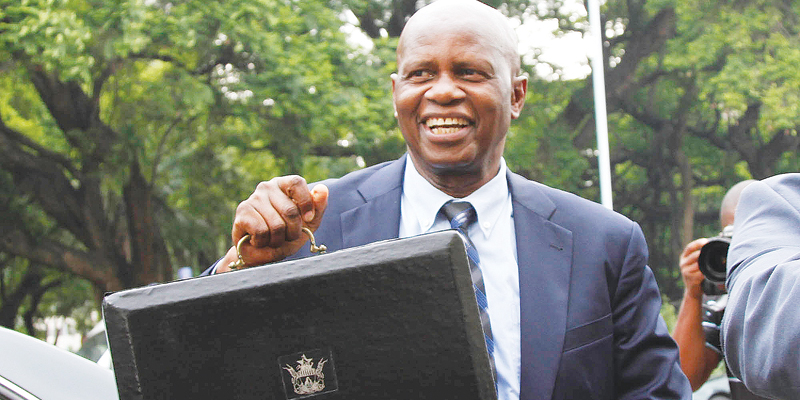
PROFESSOR Welshman Ncube-led MDC legislator Priscilla Misihairabwi-Mushonga (proportional representation) in June 2014 introduced a motion in the National Assembly calling for the removal of duty on sanitary wear.
Veneranda Langa

But, surprisingly, Finance minister Patrick Chinamasa failed to make mention of the issue during the announcement of the 2015 national budget statement.
The motion seconded by Kuwadzana MP Lucia Matibenga (MDC-T) was supported by all MPs across the political divide, even males who spoke passionately about how women suffered during their menstrual cycles.
While the Women Affairs, Gender and Community Development ministry was allocated a paltry $13 352 000 for 2015, some poor women and girls in Zimbabwe continue to suffer shameful periods using pieces of cloth, tissue, cow dung and other unhygienic methods during their menstrual cycle because the cost of sanitary wear remains exorbitant.
Although Chinamasa was mum on the matter of easing the women’s problem, he, however, allocated $5 million towards the women’s bank, which might be a positive development for the empowerment of women.
Southern Africa Parliamentary Support Trust gender and policy advisor Merjury Mhlanga said in as much as it was a very welcome development, it was not going to be an efficient way to deal with problems bedevilling women as the money might end up benefitting mostly urban women at the expense of their urban counterparts.
- Chamisa under fire over US$120K donation
- Mavhunga puts DeMbare into Chibuku quarterfinals
- Pension funds bet on Cabora Bassa oilfields
- Councils defy govt fire tender directive
Keep Reading
She also suggested that with the limited fiscal space and 20% decline in the allocations meant to cater for different needs of women, men, boys and girls, the $5 million set aside for the women’s bank could be effectively used for the Women’s Development Fund, cancer treatment, water and sanitation issues, maternal health, gender based violence and also to solve the issue of sanitary wear.
“Cancer (cervical, breast, prostate, etc) is killing a lot of people every day and over and above the $230 000 allocated for cancer advocacy under the Ministry of Health and Child Care, we propose an additional one million from the resources that have been set aside for the women’s bank so that they can be earmarked for the treatment of cervical, breast and prostate cancer,” Mhlanga said.
“On water and sanitation women find themselves as care givers to sick family members and are overburdened due to lack of water for domestic and other uses, and an amount of $200 000 from the funds towards the women’s bank can be set aside for water and sanitation,” she said.
Mhlanga said the $213 000 allocated towards the victim friendly courts for 2015 will be unable to meet the needs of the gender based violence survivors who were mostly women, adding one million dollars from the $5 million to go towards the women’s bank can be used for a sanitary wear programme so that they became affordable to most women and girls.
MDC-T MP Fanny Chirisa (proportional representation)said she was disappointed by the budget allocation towards women’s issues as it showed lack of commitment to ZimAsset and gender mainstreaming initiatives.
“The minister (Chinamasa is aware that there is a gender policy, and he knows that there is a gender strategy although not enough resources were allocated to meet the resolutions of those documents. Many ministries failed to include issues of gender mainstreaming in their budgets and the anomalies might be due to inadequate budgetary allocations,” Chirisa said.
She also proposed to Chinamasa that he should reconsider the formation of the women’s bank, and instead put the $5 million set aside for it to address issues bedevilling women.
Zimbabwe Women Resource Centre (ZWRC) director Pamela Mhlanga said she had expected the budget to allocate resources towards implementing programmes that touched on the eight strategic areas in the gender policy like legal rights, politics and decision making, health, education and training, GBV, environment and climate change, media and information communication technology (ICTs).
She also pointed out that gender budgeting was inconsistently implemented by different ministries despite a circular ordering all ministries to put it into action.
“Likewise Zim Asset identifies the prioritisation of women’s participation in ‘key social, economic and political sectors’. This requires that allocations across all sectors have a positive gender impact. Since 2010, government through the Ministry of Finance has been issuing a Budget Call Circular requiring all ministries to budget within a gender perspective. however, gender budgeting has either been implemented in an ad hoc manner or inconsistently, resulting in shortfalls in areas where women in particular can participate in the economy or benefit from public social service delivery,” Mhlanga said.
She said the Ministry of Women’s Affairs, Gender and Community Development, which was the key driver for gender mainstreaming; including gender budgeting must be adequately resourced.
“In 2014 the gender ministry was allocated 0, 3% of the overall budget. Of this only 51, 6% was disbursed and expended as at October 2014. The allocation in 2015 has increased to 0, 4% of the overall budget at $13 352 000. However, this is still very limited compared to the ministry’s mandate,” Mhlanga said.
She said the $5 million towards the women’s bank was a major investment, but she said there were shortcomings in that the operational model was unclear, making it difficult to project whether the majority of women will have access to the funds.
“Community development, a major portfolio was allocated only $50 000 in 2015 against a bid of $5 million, and considering the number of women required to be supported to undertake initiatives at community level to sustain their lives, this is no allocation at all.”
Mhlanga said there was also negligence in funding the implementation of the National Gender Based Violence Strategy (2012 to 2015).
“In 2014 an allocation of $170 000 was made towards implementation of GBV interventions, against a bid of over $700 000. GBV is not being prioritised by Treasury for budgetary allocations. The National GBV strategy is about to expire without having been adequately supported and budget support must go towards implementation of the strategy including meeting Zim Asset priorities,” she said.
The ZWRC said budget support should also go to address gender inequality in education as stipulated in millennium development goals (MDGs) two and three.
“A key area of support for children to access education by government is the Basic Education Assistance Module (BEAM). The policy is that the programme should cover levies and school tuition fees. Budgetary constraints have limited the support to both tuition and exam fees. In 2014 the budget allocation was $15 million, and only $4 million was disbursed as at October 2014. In 2015 the allocation of $ 7 million was less than 50% of the 2014 allocation. This is a serious concern in terms of access to education, particularly for the girl child,” they said.
The ZWRC also called for promotion of gender equality in health in order to meet the needs of MDG goals four, five, and six which focused on reducing child mortality, improving maternal health, and combating HIV/Aids, malaria and other diseases.
They said government should increase its support towards acquisition of Anti-Retroviral drugs (ARVs) since the prevalence rate was higher for women at 7, 8% as compared to 3, 6% for men, as well as support for cancer advocacy.
The Zimbabwe Women’s Parliamentary Caucus (ZWPC) chaired by Manicaland senator Monica Mutsvangwa said the national budget as a development tool must have a fair and positive impact on all citizens equally, particularly on marginalised and vulnerable groups in society, while at the same time responding to different needs, interests and human rights of women, men, boys and girls.
They urged government to reduce the cost of sanitary wear saying lack of it caused gynaecological diseases.
“Sanitary wear is generally available in the rural areas, and, when it is, it is costly, and therefore out of the reach of the majority living in poor backgrounds. Most sanitary wear is imported at huge cost, which is automatically passed onto the consumer,” Mutsvangwa said.
According to the ZWPC, statistics indicated that 44% of rural shops did not sell any sanitary wear at all, 72% of rural school girls used cloth for their monthly periods, and that 20% or rural girls did not go to school during their monthly periods.
“The World Health Organisation claims that 63% of gynaecological diseases are caused by using poor quality sanitary products as women are vulnerable to infection during this delicate period. There is need to put aside a fund that will be used to subsidise sanitary wear and improve women access to standard and affordable sanitary wear,” the ZWPC said.
They also called for fiscal support for women in terms of land tenure issues.
“There is need to invest in agricultural tertiary education by maintaining the 2014 budget allocation as this can act as a catalyst for women to enrol in this academic field at tertiary level. Sex disaggregated data must inform access to the 2014/2015 agriculture inputs, and special attention paid to female, child and elderly headed households that are subject to great vulnerability,” the women’s caucus said.











